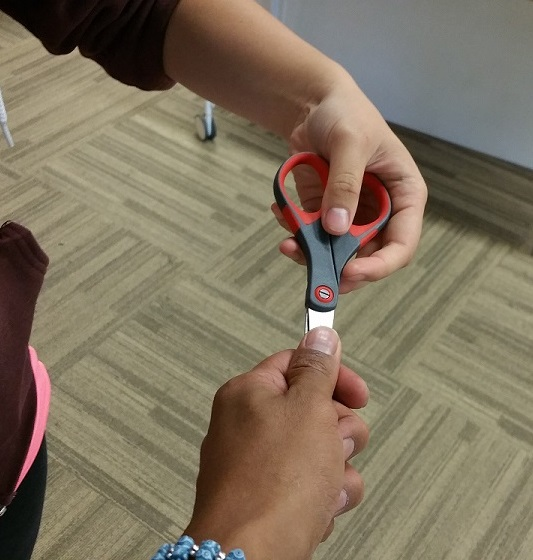第一周
作业
Collaboration online shares many attributes with real world collaboration. The goal of this assignment is to compare and contrast how we collaborate in the physical vs. digital space with the goal of gaining insight about what the future of online collaboration could be.
For example, in the physical space you might observe small talk in checkout line at the grocery store. Who do people talk with or not? Why? What do they talk about? What function does this small talk serve, besides killing time? The online counterpart may be a conversation on Reddit or a feed on Facebook in relation to food shopping. In the online version, who you connect with is more selected rather than random. How may this change what people talk about? Another thing to note is that the online world leaves a traces, it’s often searchable forever, whereas the grocery store encounter is momentary.
在线协作与现实世界的协作具有许多相同的属性。这个作业的目的是比较和对比我们如何合作在物理和数字空间的目标获得的洞察力在线协作的未来可能是什么。
例如,在物理空间中,你可能会观察到在杂货店排队结账时的闲谈。人们会和谁交谈?为什么?他们在谈论什么?这个闲聊除了消磨时间还有什么作用?在线同行可能谈话在Reddit或饲料在Facebook上与食品购物。在网络版本中,你联系的人更多的是选择性的,而不是随机的。这将如何改变人们谈论的话题呢?另一件需要注意的事情是,网络世界会留下痕迹,它通常是永远都可以搜索到的,而在杂货店的邂逅是瞬间的。
Step 1: IRL (In Real Life)
Spend at least 30 minutes observing a physical collaboration site, for example: school tutoring, dance practice, boarding an airplane, socializing at a bar, standing in line, moving furniture, work meetings, etc. Take notes and photographs of coordination events: pointing to draw attention, counting out the beat, negotiating where people stand and sit, initiating a conversational turn, implicitly making space for others activities, using eye contact to coordinate timing and attention, the use of paper artifacts to set context, etc.
From your in-person observations, select three acts of coordination: (1) one that you believe was fluent or successful, (2) one that you believe was disfluent or unsuccessful, and (3) one that you found creative or interesting. For each, submit a photograph and write 1-2 sentences describing it. Please do not include faces in your submission (crop or black out photos if necessary). Peer reviewers will be advised to flag submissions that contain faces. If the image contains a visible face that has not been obscured, please report the submission to Coursera using the link found here.
Here is an example of a picture you might take:
In this example, the students have negotiated how to pass the scissors in order to coordinate safety. Notice the students faces are not in the picture at all. Here, the student used a camera placement technique so that no faces would have to be cropped or blurred. Remember, the idea is to photograph acts of coordination, so I encourage you to think outside the box when looking for ways to capture these moments.
第一步:现实生活中
至少花30分钟观察一个实体协作场所,例如:学校辅导、舞蹈练习、登机、酒吧社交、排队、移动家具、工作会议等。对协调活动做笔记和拍照:指手划脚以吸引注意力,计算节拍,商议人们的站立和坐的位置,开始对话,暗中为他人活动腾出空间,使用眼神交流来协调时间和注意力,使用纸制品来设置背景,等等。
从你的亲身观察中,选择三种协作行为:(1)你认为流畅或成功的,(2)你认为不流畅或不成功的,(3)你认为有创意或有趣的。提交一张照片,写1-2句话来描述它。请不要在你提交的照片中包括脸(如有必要,剪掉或涂黑照片)。建议同行评审人员标记包含面孔的提交。如果图片中有未被遮盖的可见面孔,请使用这里的链接向Coursera报告提交情况。
这里有一张你可能拍的照片的例子:
在这个例子中,学生们协商如何传递剪刀来确保协同工作时安全。注意,照片里根本没有学生的脸。在这里,这位学生使用了一种相机放置技术,这样就没有人脸需要被裁剪或模糊。记住,摄影的目的是为了拍摄协调的行为,所以我鼓励你在寻找捕捉这些瞬间的方法时,跳出固有的思维模式。
Step 2: Online
Identify an online collaboration site that is the closest parallel you can think of to your physical site. For example, for school tutoring, it might be an online tutoring site or discussion forum. Other parallels may require more creativity: like what is the online equivalent of negotiating who gets the armrest in an airplane seat? Maybe it’s coordinating whose question gets answered on a Reddit forum. Again, take notes and screenshots of coordination events. What signals does the platform provide for coordination? How do people create their own cues, or adapt conventions from the offline world?
From your online observations, select three acts of coordination: (1) one that you believe was fluent or successful, (2) one that you believe was disfluent or unsuccessful, and (3) one that you found creative or interesting. For each, submit a screenshot and write 1-2 sentences describing it.
You will also write 2-3 sentences explaining the parallells between the online- and the person observation.
步骤2:在线
确定一个在线协作站点,它是您所能想到的与您的物理站点最相似的站点。例如,对于学校辅导,它可能是一个在线辅导网站或讨论论坛。其他相似之处可能需要更多的创造力:像什么是在线相当于谈判谁飞机座位的扶手吗?也许是协调谁的问题在Reddit论坛上得到了回答。同样,记下协调事件的笔记和屏幕截图。该平台为协调提供了什么信号?人们如何创造他们自己的线索,或适应来自离线世界的惯例?
从你的在线观测,选择三个协调的行为:(1)你认为流利或成功,(2)你认为我们想当然或成功,和(3)一个你发现创造性的或有趣的。对于每一个,提交一个截图并写1-2句话来描述它。
你也要写2-3个句子来解释在线观察和个人观察之间的相似性。
Step 3: Inventing the Future
Based on your observations of these two settings, what is something in real life that you think would be difficult to replicate online? How can you creatively address the function of that goal even if the means is dramatically different. For example, if you observe a meeting, you might see that people raised their hand or lean in or make other physical gestures to request a turn to speak. If you were making a telepresence robot, or video conferencing system for remote attendees to be “co-present”, how might you support the function of conversational turn-taking? Or, you might think about providing an occasion online for people to serendipitously connect with folks in their neighborhood. What might this be? Would it be making visible when others in your neighborhood are on the same website? One solution might be that If you were both viewing the local newspaper, an icon would pop up indicating each others presence.
Your submission will include: the coordination function you identify and seek to reimagine online, a hand-drawn sketch of what that might look like (1 pg), and 2-3 sentences describing how the interface you’ve sketched would work.
第三步:创造未来
根据你对这两种情况的观察,你认为在现实生活中哪些东西是很难在网上复制的?你如何才能创造性地实现目标的功能,即使方法截然不同。举个例子,如果你观察一个会议,你可能会看到人们举起手,或向前倾或做其他身体动作来要求发言。如果你正在制作一个远程呈现机器人,或者让远程与会者“共同出席”的视频会议系统,你如何支持会话轮流发言的功能?在线,或者你可能会考虑提供一个机会让人们互相联系的人在他们的社区。这是什么呢?当你的邻居在同一个网站上的时候,你的网站是否可以被看到?一种可能的解决办法是,如果你们都在看当地的报纸,一个图标会弹出,表明对方的存在。
你要提交的内容包括:你在网上确定并试图重新设想的协调功能,手绘草图(1 pg),用2-3句话描述你所设计的界面如何工作。

